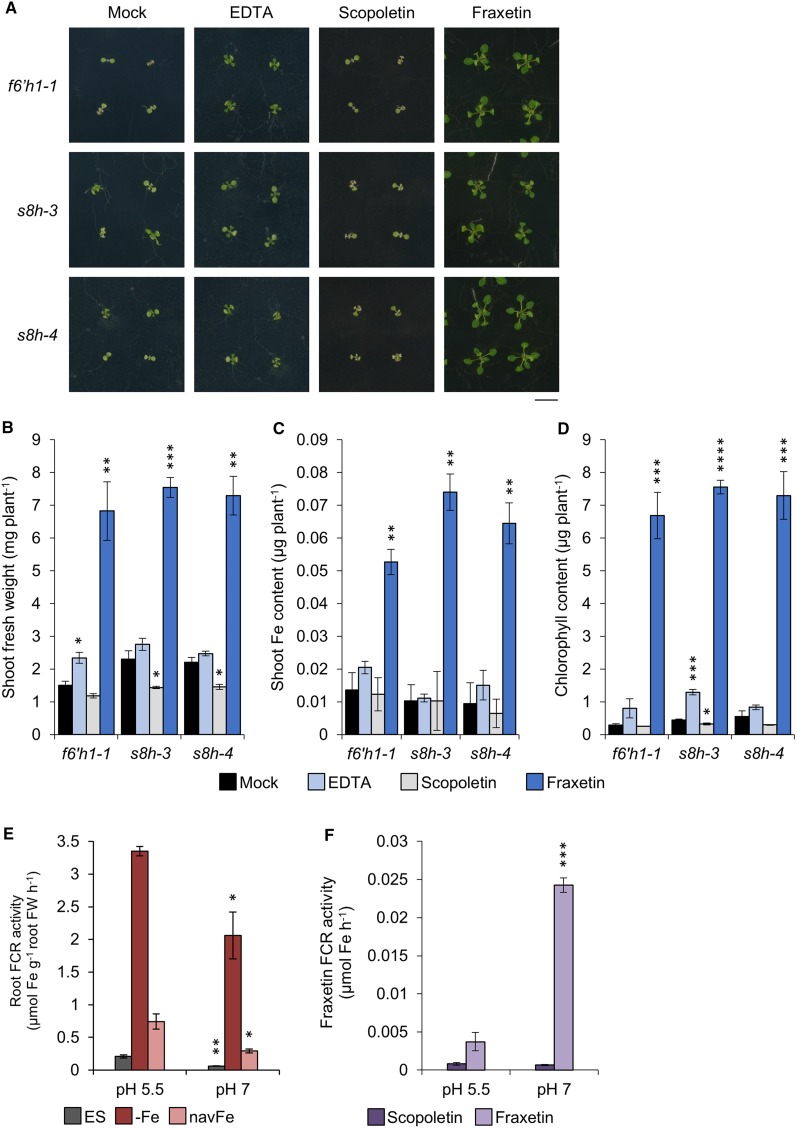Figure 4.
Rescue of mutants by exogenous application of fraxetin in navFe media. A, Phenotypes of f6’h1-1, s8h-3, and s8h-4 mutants grown for 14 d on navFe media supplemented with 120 μm of either EDTA, scopoletin, or fraxetin. Representative images from three independent experiments are shown. Bar = 1 cm. B, Shoot fresh weight. C, Shoot Fe content. D, Chlorophyll content. Each bar represents the mean ± se of three independent experiments. Statistical testing was carried out using Student’s t test. Asterisks indicate significant differences from the mock treatment for each mutant: *, P ≤ 0.05; **, P ≤ 0.01; ***, P ≤ 0.001; ****, P ≤ 0.0001. E and F, FCR activity of roots (E) and fraxetin (F) was assayed at pH 5.5 (MES) and 7.0 (MOPS). Col-0 plants were precultivated in ES media for 10 d and transferred to either ES, −Fe (ES with no Fe3+-EDTA, containing 100 μm ferrozine), or navFe media for 3 d before conducting the FCR assay. For measuring Fe3+ reduction by coumarin compounds, 100 μm of either fraxetin or scopoletin was added in the FCR assay instead of roots and normalized to blanks with DMSO. Each bar represents the mean ± se of three independent experiments. Statistical testing was carried out using Student’s t test. Asterisks indicate significant differences from the assay buffered at pH 5.5: *, P ≤ 0.05; **, P ≤ 0.01; ***, P ≤ 0.001.

